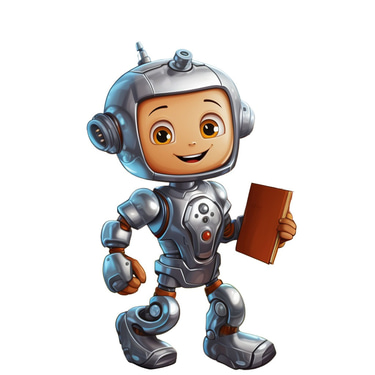How AI is Changing the Classroom: A Look into the Future of Education for Kids
10/15/20233 min read


Automated Grading: Revolutionizing Assessment
One of the most time-consuming tasks for educators is grading assignments and exams. However, with the advent of automated grading systems, this burden is being alleviated. Automated grading uses artificial intelligence (AI) algorithms to evaluate and provide feedback on student work, saving teachers valuable time and allowing them to focus on other aspects of their role.
Not only does automated grading reduce the workload for educators, but it also offers several benefits for students. Immediate feedback allows students to understand their mistakes and learn from them in real-time. This instant feedback loop helps students to correct their errors and improve their understanding of the subject matter.
Interactive Learning Environments: Engaging Students
Gone are the days of passive learning where students simply listen to lectures and take notes. Interactive learning environments are changing the way students engage with educational content. These environments utilize multimedia elements, such as videos, simulations, and interactive exercises, to make learning more engaging and interactive.
By actively participating in their learning, students are more likely to retain information and develop a deeper understanding of the subject matter. Interactive learning environments also promote collaboration and critical thinking skills, as students work together to solve problems and complete tasks.
Adaptive Learning Platforms: Tailoring Education to Individual Needs
Every student is unique, with different strengths, weaknesses, and learning styles. Adaptive learning platforms leverage technology to personalize education based on individual needs. These platforms use data analytics and AI algorithms to assess each student's knowledge, skills, and learning pace.
With this information, adaptive learning platforms can create personalized learning paths for students. Students are presented with content and activities that are tailored to their specific needs, ensuring they receive the right level of challenge and support. This personalized approach to education maximizes student engagement and promotes mastery of the subject matter.
Data-Driven Insights: Informing Instruction
One of the most significant advantages of technology in education is the ability to collect and analyze vast amounts of data. Data-driven insights provide valuable information to educators, allowing them to make informed decisions about their instruction.
By analyzing data on student performance, educators can identify areas where students are struggling and adjust their teaching accordingly. They can also track student progress over time, providing targeted interventions and support to those who need it most. Data-driven insights empower educators to continuously improve their instruction and ensure that every student has the opportunity to succeed.
Enhanced Accessibility: Breaking Down Barriers
Technology has the power to break down barriers and make education more accessible to all. With the rise of online learning platforms, students can access educational content from anywhere in the world, at any time.
For students with disabilities or those who face geographical or financial constraints, technology provides opportunities that were previously unavailable. Accessibility features, such as closed captions, screen readers, and alternative text, ensure that educational content is inclusive and can be accessed by all students.
AI Tutors and Assistants: Personalized Support
AI tutors and assistants are transforming the way students receive support outside of the traditional classroom setting. These intelligent virtual assistants can provide personalized guidance, answer questions, and offer explanations to students.
AI tutors and assistants are available 24/7, providing students with immediate support whenever they need it. This personalized support helps students to reinforce their understanding of the subject matter and overcome any challenges they may face.
Early Detection of Issues: Intervention and Support
Technology also enables early detection of learning difficulties or issues that students may be facing. Through continuous assessment and data analysis, educators can identify students who are struggling and provide timely intervention and support.
Early detection allows educators to address learning difficulties before they become more significant challenges. By providing targeted interventions, educators can help students overcome obstacles and ensure their academic success.
Preparation for Future Careers: Equipping Students with Essential Skills
The world is rapidly changing, and the skills required for future careers are evolving. Technology in education plays a crucial role in preparing students for the future by equipping them with essential skills.
Through personalized learning pathways, students can develop skills such as critical thinking, problem-solving, collaboration, and digital literacy. These skills are highly valued in the modern workforce and will prepare students for the careers of tomorrow.
In conclusion, technology is revolutionizing education by providing personalized learning pathways for students. Automated grading, interactive learning environments, adaptive learning platforms, data-driven insights, enhanced accessibility, AI tutors and assistants, early detection of issues, and preparation for future careers are just a few examples of how technology is transforming education. With these advancements, students can receive personalized support, engage with educational content in a meaningful way, and develop the skills they need to succeed in the future.
